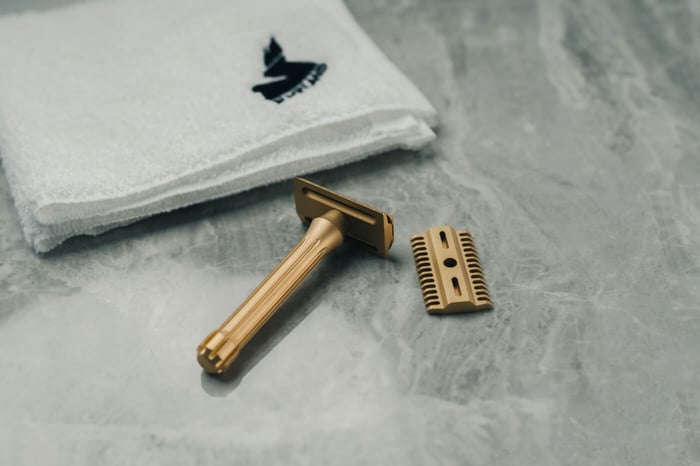Should your next safety razor be made of brass or stainless steel? These are two of the most popular materials for razors and they're both great options that can be machined precisely and provide incredible shaving characteristics. But they're also quite similar so how do you decide between the two of them? In this post we'll share some of the many points of contrast between stainless steel and brass safety razors.
Btw, the Blackbird just so happens to be available in both metals.
Weight
Thanks to its greater density, brass puts the Blackbird at 101 grams while stainless steel comes in at 94 grams. That 7% difference isn't huge, but it can be meaningful during a shave. If you like to let gravity do as much work as possible, brass might be the best choice. Choose stainless for something substantial, but a bit lighter.
Patina
This is likely the biggest point of consideration when cross-shopping brass and stainless steel. Over time, brass oxidizes and develops a unique patina. This can show up as a consistent darkening of the whole part or uneven with areas becoming quite dark. The underlying metal is perfectly fine and the effect is only aesthetic. Some people love that their razor will age over time and develop a unique look unlike any other razor. But some people may hate that they can't control how their expensive razor looks. Nobody is wrong here, but if you find yourself in the latter camp, stick to stainless steel which will look the same in fifty years.
Smoother Threads
Brass is well-known for its "self-lubricating" properties. That makes brass threads buttery smooth. It's a minor thing that doesn't affect the shave, but assembling a brass razor makes the whole experience just a little bit sweeter.
Heat Retention
Brass has a specific heat capacity twice that of stainless steel. In simple terms, this means that brass holds onto heat about twice as well. So a brass razor left in hot water for a few minutes will stay nice and warm during a shave while a stainless one cools off quickly. It's another small benefit, but if you enjoy a warm safety razor during your shave, brass is the way to go.
Price
In CNC machining, it's all about speed; the faster a part can be machined, the less it costs. Since brass is a softer material, it's a bit quicker to machine so brass razors are generally less expensive than the same safety razor in stainless steel. That's why the Blackbird Brass comes in at just $169 while the Blackbird is $200.




